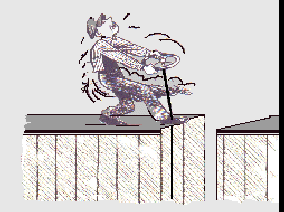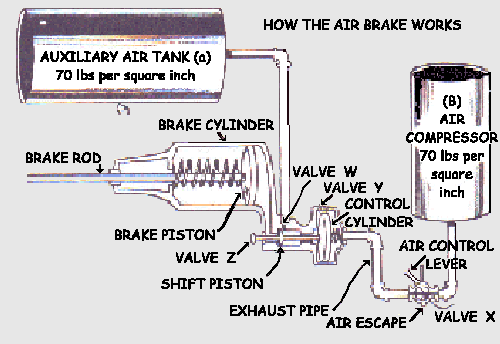|
STOP IT!
It was easy to make trains
go. Speeds increased with evey passing year. But stopping trains was another
matter.
Brakemen did their best with
early hand brakes, but to be brutally frank, the only way to stop a traain
quickly was to run into something! Then in the late 1860s, young
George Westinghouse found the answer.
Westinghouse's "air brakes"
were first tested in 1868. Cornelius Vanderbilt dismissed the invention
as a "fool idea". The tests were highly successful.
Here is how the air brakes
work:
Compressed air in Tanks
(A) and (B) is under equal pressure. When the Air Control Lever is opened,
Valve X cuts off Tank (B) allowing air in the exhaust, and on the right
side of the Control Piston to escaape.
Pressure to the left forces
Control Piston to the right, clossing Valve Y. This pulls the Shift Piston
across Valve W and closes Vale Z.
This allows air from Tank
(A) to rush into cylinder pushig the brak Piston and stopping the car.
|




